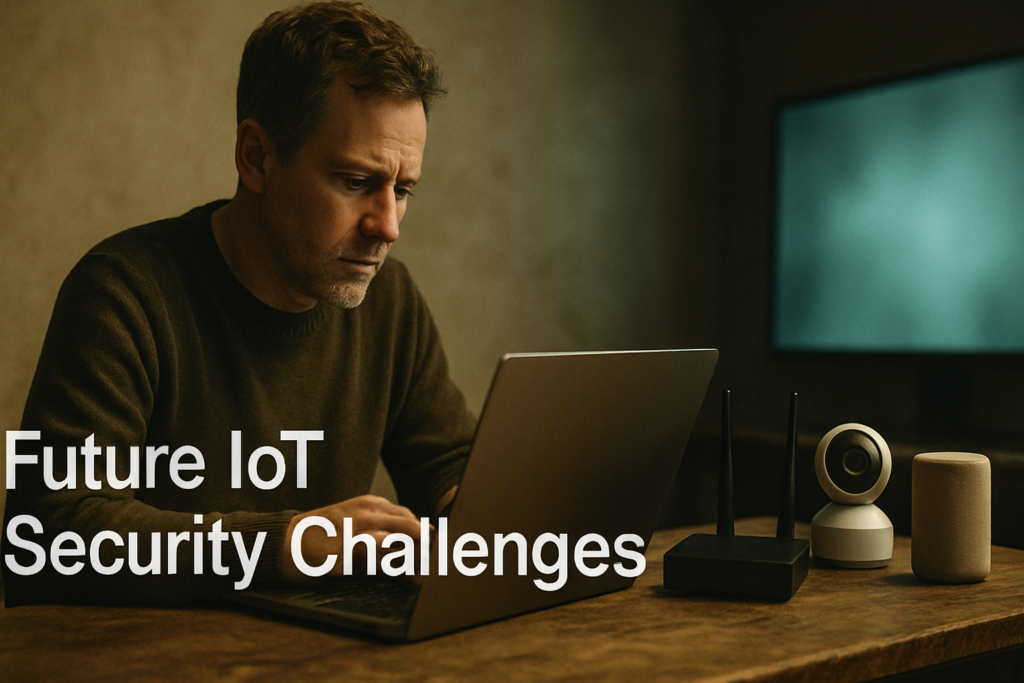In the ever-evolving landscape of healthcare, the integration of Internet of Things (IoT) technology has revolutionized patient care and management. As a seasoned expert in the field, I’ve witnessed firsthand the remarkable advancements and challenges that come with the implementation of IoT in healthcare settings.
From wearable devices monitoring vital signs in real-time to interconnected systems streamlining patient data, IoT has paved the way for more personalized and efficient healthcare solutions. However, with these innovations also come concerns about data security, interoperability, and ethical considerations that must be carefully navigated to ensure the successful integration of IoT in healthcare practices.
Join me as we delve into the intricate world of IoT in healthcare, exploring the transformative impact it has had on patient outcomes and the hurdles that healthcare professionals face in harnessing its full potential.
Overview of IoT in Healthcare
Exploring the transformative impact of IoT in healthcare, we delve into the realm of technology-driven advancements and the challenges that accompany this integration. From wearable devices constantly monitoring vital signs to interconnected systems that streamline patient data, IoT has revolutionized patient care and management in the healthcare industry. Amidst the excitement of these innovations, however, concerns surrounding data security, interoperability, and ethical considerations loom large, shaping the landscape of IoT implementation in healthcare. As healthcare professionals strive to harness the full potential of IoT to enhance patient outcomes, they are faced with the complex task of navigating these challenges to ensure the seamless integration of technology into the healthcare ecosystem.
Advancements in IoT Applications
In the realm of healthcare, IoT has significantly advanced patient care through innovative applications. Let’s delve into some prominent areas where IoT has made substantial progress.
Remote Patient Monitoring
I have witnessed a remarkable evolution in remote patient monitoring thanks to IoT technology. It allows healthcare providers to track patients’ vital signs, medication adherence, and overall health status from a distance. For instance, wearable devices such as smartwatches equipped with sensors can continuously monitor a patient’s heart rate, blood pressure, and activity levels, providing real-time data to healthcare professionals. This constant monitoring fosters proactive intervention, early detection of health issues, and personalized treatment plans tailored to individual patients’ needs.
Predictive Analytics
Through the utilization of predictive analytics powered by IoT, healthcare providers can now foresee potential health outcomes and trends with a high level of accuracy. By analyzing vast amounts of data collected from IoT devices, including patient records, genetics, environmental factors, and lifestyle habits, predictive analytics enable healthcare professionals to identify patterns, predict diseases, and intervene proactively. This proactive approach not only enhances preventive care but also optimizes treatment strategies, ultimately leading to improved patient outcomes and a more efficient healthcare system.
Challenges in Implementing IoT in Healthcare
In implementing IoT in healthcare, a few challenges need to be addressed to ensure successful integration. One of the primary concerns is data security. Securing sensitive patient data transmitted through various IoT devices is crucial to safeguard patient privacy and comply with regulations. Healthcare providers must prioritize robust cybersecurity measures to prevent unauthorized access and data breaches.
Another challenge is interoperability. The seamless exchange of data between different IoT devices, platforms, and systems is essential for comprehensive patient care. Lack of standardized protocols and compatibility issues can hinder data sharing and interoperability, impacting the efficiency of healthcare delivery and decision-making processes.
Furthermore, scalability poses a significant challenge in deploying IoT solutions across healthcare settings. As the volume of connected devices and data increases, healthcare organizations must ensure scalability to support the growth and evolving needs of their IoT infrastructure. This involves investing in scalable technology solutions and adapting existing systems to accommodate expansion seamlessly.
Moreover, regulatory compliance is a key challenge in implementing IoT in healthcare. Adhering to stringent healthcare regulations and privacy laws while leveraging IoT technology requires a thorough understanding of legal requirements and industry standards. Healthcare providers need to navigate complex regulatory frameworks to ensure compliance and mitigate legal risks associated with IoT implementation.
Lastly, addressing the issue of data overload is essential in optimizing IoT applications in healthcare. The massive amounts of data generated by IoT devices can overwhelm healthcare professionals, making it challenging to extract meaningful insights efficiently. Implementing data management strategies and leveraging advanced analytics tools are crucial to process and analyze vast datasets effectively, enabling healthcare providers to derive actionable insights for enhanced decision-making and patient care.
Overcoming these challenges through strategic planning, investment in cybersecurity, fostering interoperability, ensuring scalability, maintaining regulatory compliance, and implementing robust data management practices are vital steps in successful IoT integration in healthcare. By addressing these challenges proactively, healthcare organizations can unlock the full potential of IoT technology to improve patient outcomes, streamline operations, and revolutionize the healthcare industry.
Security and Privacy Concerns
Ensuring robust security and privacy measures is paramount when it comes to implementing IoT in healthcare. As healthcare devices become more interconnected, the risk of cybersecurity threats also increases. I’ll discuss some key security and privacy concerns that need to be addressed to safeguard patient data and maintain trust in IoT technology in the healthcare sector.
- Data Security: Protecting sensitive patient data from unauthorized access is crucial. With the vast amount of data generated by IoT devices, ensuring end-to-end encryption and secure data storage practices are essential to prevent data breaches.
- Privacy Regulations: Adhering to strict privacy regulations such as HIPAA (Health Insurance Portability and Accountability Act) is imperative to maintain patient confidentiality. Healthcare organizations must comply with these regulations to avoid hefty fines and maintain patients’ trust.
- Cybersecurity Threats: The interconnected nature of IoT devices introduces new cybersecurity vulnerabilities. Being vigilant against malware, ransomware attacks, and unauthorized access is crucial to prevent data tampering and ensure the integrity of healthcare systems.
- IoT Device Integrity: Verifying the authenticity and integrity of IoT devices is essential to prevent tampering or unauthorized access. Implementing device authentication mechanisms and ensuring regular security updates are vital to protect healthcare systems from intrusions.
- Data Access Controls: Limiting access to sensitive patient data to authorized personnel only is key to maintaining privacy. Implementing strict access controls, role-based permissions, and regular audits can help prevent data misuse and unauthorized access to confidential information.
By addressing these security and privacy concerns proactively, healthcare organizations can mitigate risks associated with IoT implementations and ensure the safety and confidentiality of patient data. Building a secure IoT infrastructure is vital for fostering trust among patients and healthcare providers and unlocking the full potential of IoT technology in transforming healthcare delivery.


 Leeyo Mattisonell, the founder of The Code Crafters Hub, is a trailblazer in the realm of software development and technology. With a passion for advancing the field, Mattisonell established The Code Crafters Hub as a premier destination for both software professionals and enthusiasts. His vision was to create a platform that not only delivers the latest industry news but also offers valuable insights into web and game development. Under his leadership, the hub has become a vital resource for understanding emerging technologies, including the Internet of Things (IoT) and cybersecurity trends. Mattisonell’s dedication to providing cutting-edge content ensures that the platform remains at the forefront of the ever-evolving tech landscape.
Mattisonell’s commitment to excellence is evident in the comprehensive and timely updates featured on The Code Crafters Hub. By focusing on dynamic web development techniques, game development innovations, and practical cybersecurity tips, he has positioned the hub as an essential tool for developers at all stages of their careers. Located in Warren, MI, and operating from 9 AM to 5 PM, the hub reflects Mattisonell’s dedication to fostering a knowledgeable and secure tech community. His leadership continues to drive the platform’s success, making it an invaluable resource for anyone looking to stay ahead..
Leeyo Mattisonell, the founder of The Code Crafters Hub, is a trailblazer in the realm of software development and technology. With a passion for advancing the field, Mattisonell established The Code Crafters Hub as a premier destination for both software professionals and enthusiasts. His vision was to create a platform that not only delivers the latest industry news but also offers valuable insights into web and game development. Under his leadership, the hub has become a vital resource for understanding emerging technologies, including the Internet of Things (IoT) and cybersecurity trends. Mattisonell’s dedication to providing cutting-edge content ensures that the platform remains at the forefront of the ever-evolving tech landscape.
Mattisonell’s commitment to excellence is evident in the comprehensive and timely updates featured on The Code Crafters Hub. By focusing on dynamic web development techniques, game development innovations, and practical cybersecurity tips, he has positioned the hub as an essential tool for developers at all stages of their careers. Located in Warren, MI, and operating from 9 AM to 5 PM, the hub reflects Mattisonell’s dedication to fostering a knowledgeable and secure tech community. His leadership continues to drive the platform’s success, making it an invaluable resource for anyone looking to stay ahead..
